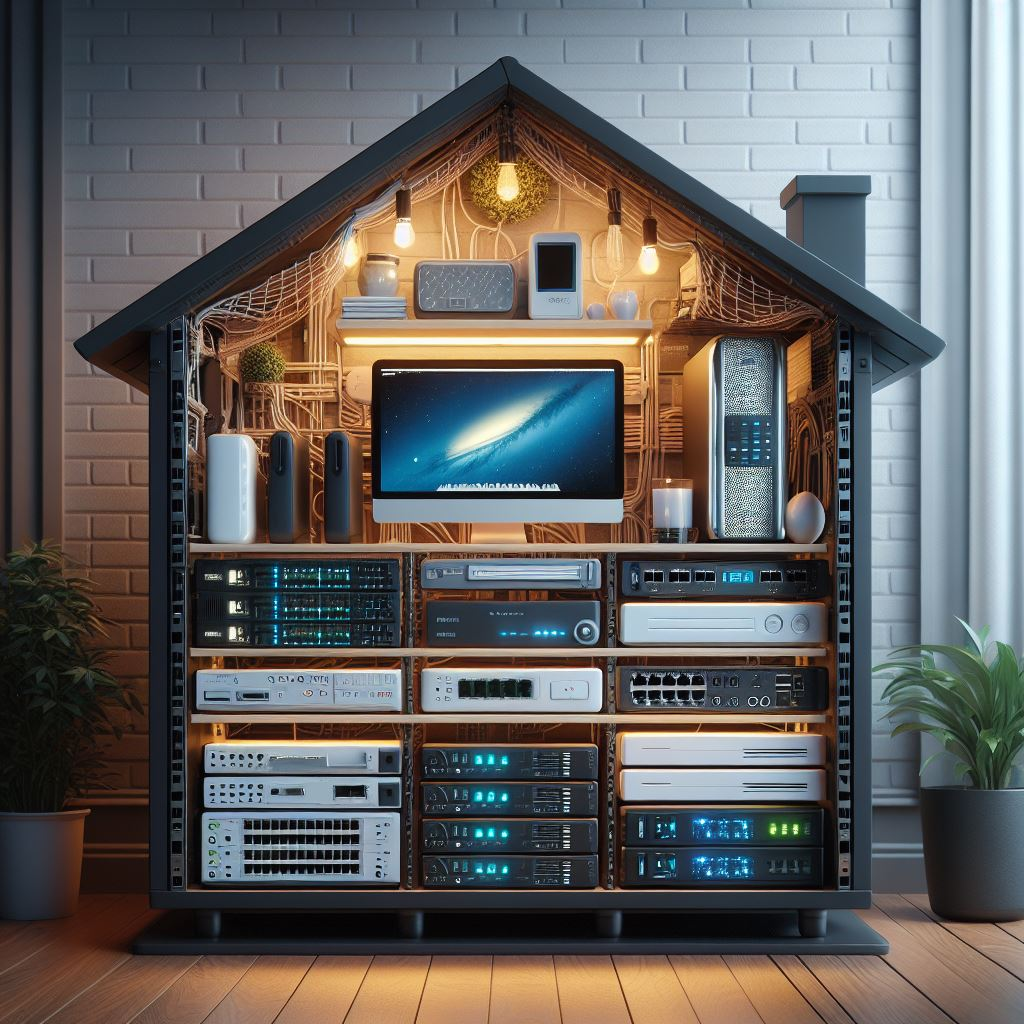Home Network Setup
Introduction
Home network setup is the foundation of our digital life. For most of us, the devices (a modem and a router) provided by the ISP (Internet Service Provider) are enough to meet our needs, especially if we live in an apartment with limited space. However, if you live in a house with multiple floors or you would like to have more control over your network, you may need to consider upgrading your home network setup to ensure a stable and fast connection throughout your home. In this article, I will briefly talk about the components of a home network setup and how to choose the right components for your home network.
Components
- Modem
- Access Controller (AC)/Router
- Switch
- Access Point (AP)
- Ethernet cables
- Network Attached Storage (NAS) (optional)
- Server rack (optional)
Modem
A modem is a device that connects your home network to the Internet. It converts the data from your ISP into a digital signal that can be used by your devices. Most ISPs provide a modem when you sign up for their service. If you are not satisfied with the performance of the modem provided by your ISP, you can consider purchasing your own modem. Make sure that the modem you purchase is compatible with your ISP.
Access Controller/Router
An access controller (AC) or a router is a device that connects multiple devices to your home network. It acts as a gateway between your devices and the Internet. Most ACs also have a built-in firewall to protect your network from external threats. When choosing an AC, make sure that it has enough ports to connect all your devices. Currently, most ACs integrate a router and a wireless access point (AP) into a single device. However, if you have a large house or you have many devices that require a stable connection, you may need to consider using AC + AP (recommended) or mesh Wi-Fi system (usually with lag).
Switch
A switch is a device that connects multiple devices within your home network. It is used to expand the number of ports available on your AC.
Access Point
An access point (AP) is a device that connects your wireless devices to your home network. It is used to extend the coverage of your wireless network. If you have a large house or you have many devices that require a stable connection, you may need to consider using an AP in each room to ensure a stable and fast connection throughout your home. You may choose AP with PoE (Power over Ethernet) to simplify the installation and reduce the number of cables needed if you have ethernet cables pre-installed in your house.
Ethernet Cables
Ethernet cables are used to connect your devices to your home network. They are faster and more reliable than Wi-Fi connections. For most of us, cat5e or cat6 cables are enough to meet our needs since they can support speeds up to 1 Gbps (our home network speed is usually ranging from 100 Mbps to 1 Gbps). But if you need to transfer large files between devices (such as a NAS and your PC), you may need to consider using cat6a or cat7 cables to support speeds up to 10 Gbps. Please notice that to reach the maximum speed, you need to ensure that all the devices in the network support the same speed, from your router to your switch and to your NAS and PC. The so called “weakest link” principle applies here, that is the speed of the network is determined by the slowest device in the network.
Network Attached Storage (NAS)
A Network Attached Storage (NAS) is a device that allows you to store and access files over your home network. It is used to back up your files, stream media, and share files with other devices on your network. If you have many devices that require access to the same files, you may need to consider using a NAS to centralize your files. A NAS can also be used to back up your files automatically, so you don’t have to worry about losing your data.
Server Rack
A server rack is a cabinet that houses your networking equipment. It is used to organize and protect your networking equipment and make it easier to manage your home network.
Conclusion
In conclusion, you can ensure a stable and fast connection throughout your home by choosing the right components for your home network. If you have any questions or suggestions, please feel free to leave a comment below. Thank you for reading!
